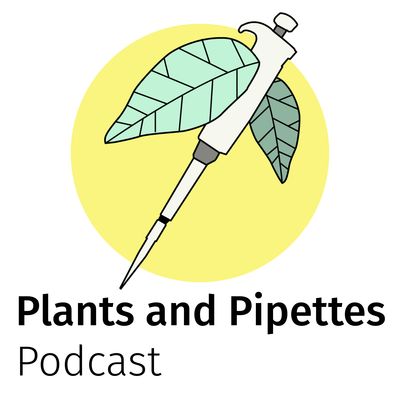Episode 100 pt 1: The facts awaken
Yay! It is episode 100! To celebrate, we’re bringen 100 mostly plant science facts to you. Because we can’t ask you to listen to us for THAT long, we’re splitting the bulk. So get ready for the first 25(ish) facts from our giant list!
- From Bethany Nichols: flowers can “hear” bees coming and start producing nectar to encourage them to land on their flowers!
Flowers can hear buzzing bees—and it makes their nectar sweeter
Flowers respond to pollinator sound within minutes by increasing nectar sugar concentration - Trick or treat: plants that beat up bees
- From Cathartic Outlet: Any two maize plants are genetically more different genetically than humans and chimpanzees
Genetic diversity of maize - From Fully Operational Gardening Apple: A lot of what we call vegetables are actually fruit. Peppers, cucumbers, tomatoes, peas all originate from a flower, which makes them fruit.
- Opinion: Ménage-à-trois hypothesis of plastid endosymbiosis ($) | Plantae
- From Aly Baumgartner: Some plants produce a type of terpenoid called phytoecdysteroids. These mimic the compounds used by arthropods to molt and can cause insects to molt themselves to death. (src: The phytochemical, biological, and medicinal attributes of phytoecdysteroids: an updated review)
- From Rahul Kumar: Plants such as Nescodon produce red nectar which is the visual and honest signal for geckos living there.
Mauritian coloured nectar no longer a mystery: a visual signal for lizard pollinators | Biology Letters - From Luis de Luna: Some Begonia species organize thylakoids differently in epidermal cells, making them iridescent and allowing them to capture a broader light spectrum than regular chloroplasts.
(PDF) Lamelloplasts and minichloroplasts in Begoniaceae: iridescence and photosynthetic functioning - Bomblebees – TNT, Blue, Science Bots – Plants and Pipettes
- Behold, my brilliant blue fat globules! – Plants and Pipettes
- Shade Gives This Begonia the Iridescent Blues — In Defense of Plants
- From Teagen Quilichini: Sporopollenin is one of the most chemically inert biopolymers. It degrades very slowly, so that it is often used to identify shells of spores and pollen grains in sediments
Sporopollenin - What is the most abundant biopolymer on Earth? It is cellulose!
Cellulose - There is twice as much RuBisCO on the planet than there are humans (by weight).
RuBisCO is the most abundant protein complex on Earth. There are around 700 Megatonnes of Rubisco (that is 700 000 000 tonnes) on Earth. There are 332 000 000 tonnes of human on the planet. The global mass and average rate of rubisco - Rhizanthella gardneri
- The smell of cut grass is meant to bring all the wasps to the yard.
The maize lipoxygenase, ZmLOX10, mediates green leaf volatile, jasmonate and herbivore‐induced plant volatile production for defense against insect attack - From Rahul Kumar: Ceratocaryum argenteum produces dung smelling seeds for successful seed dispersion by the dung beetle, an example of faecal mimicry and deception behaviour in plants.
How dung beetles are duped into rolling and burying seeds - From Bethany Nichols: Daisy “flowers” aren’t one flower, they’re hundreds of flowers in a structure mimicking a single flower Blossom
Parts of a Daisy Flower - The complete plastid genome sequence of the parasitic green alga Helicosporidium sp. is highly reduced and structured
- There is a ficus that will strangle you. Well, only if you are a tree.
From Sam: Strangler fig - from Cats: The cat reference genome used to be more precise than the human reference genome.
All views are our own. If you want to comment or correct anything we said, leave a comment under this post or reach out to us via twitter, facebook or instagram.
Our opening and closing music is Caravana by Phillip Gross
Until next time!
Support Us!
